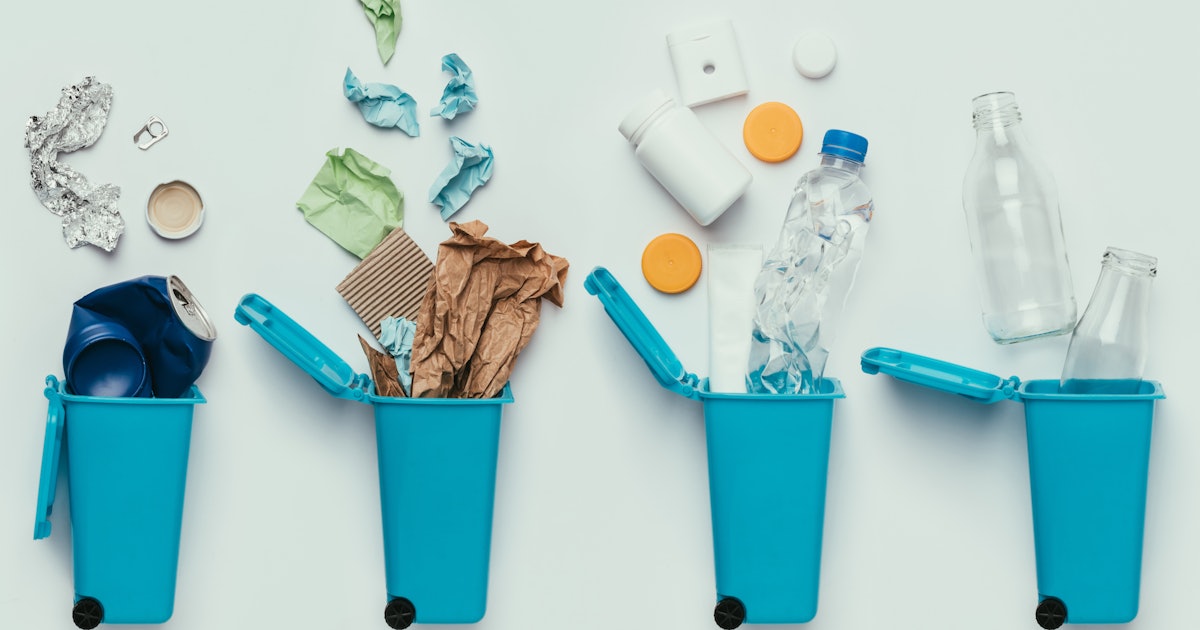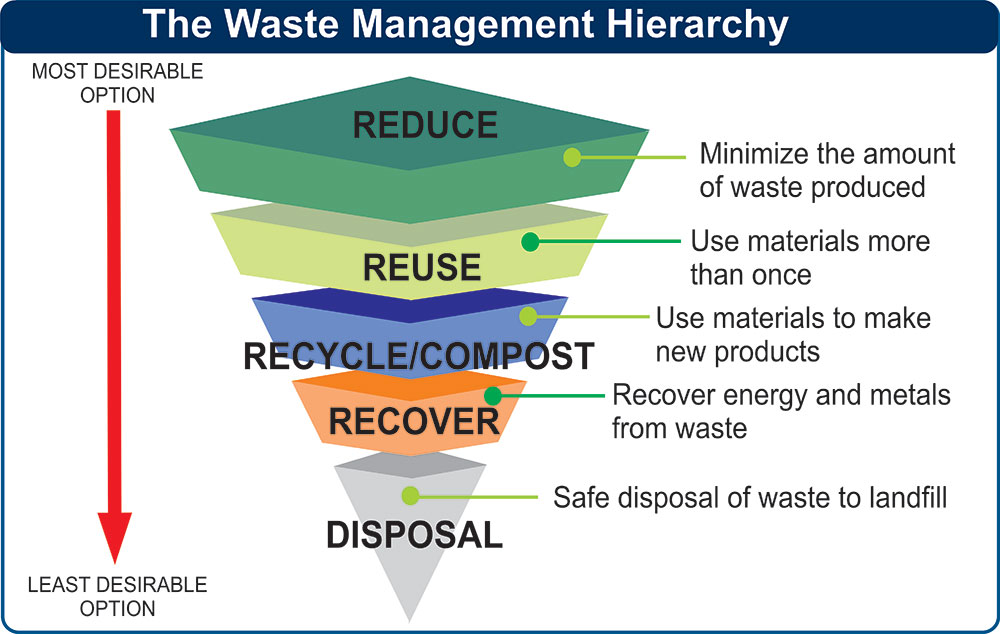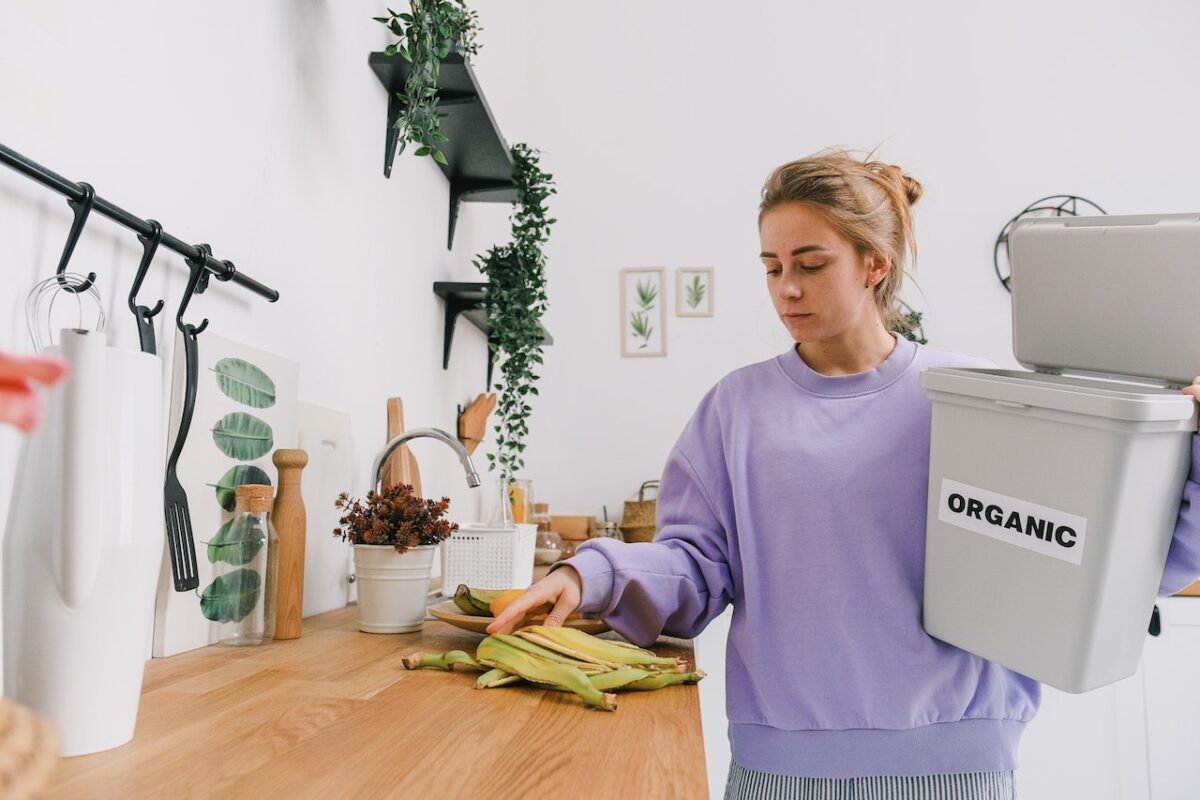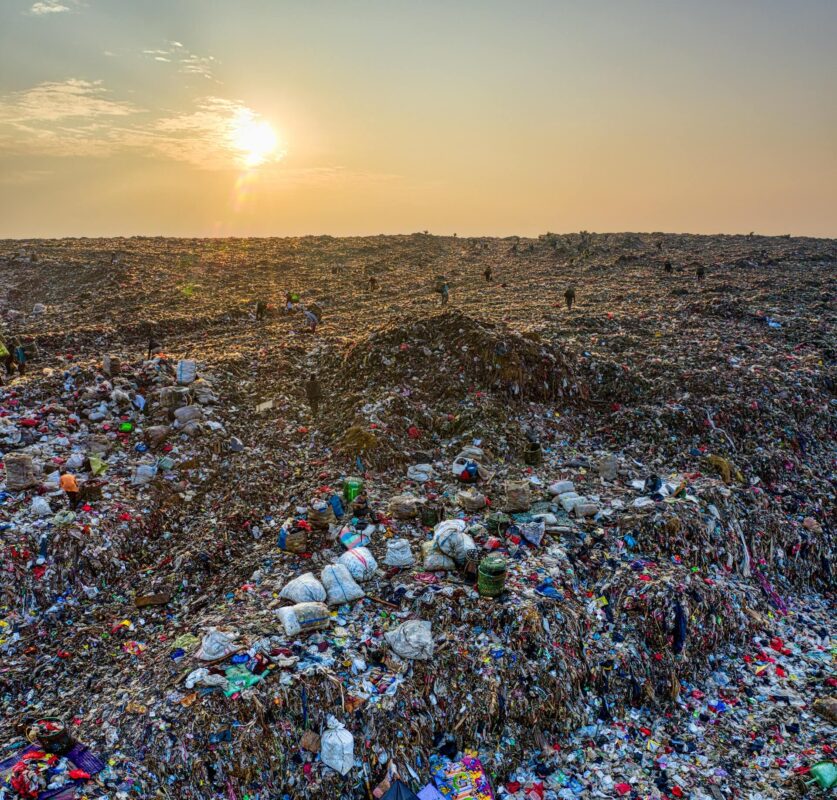3 R’s For Zero Waste Lifestyle: Reduce, Reuse and Recycle
In today’s consumer-driven society, the availability of a plethora of products has unfortunately led to a disposable attitude towards possessions. This has had detrimental effects on the environment, with millions of items ending up in landfills or oceans. However, a shift in consumer attitudes is noticeable, with more people becoming environmentally conscious and seeking ways to extend the lifespan of their products. Nanotechnology has emerged as a revolutionary solution in this regard, offering coatings that can protect and extend the life of various consumer items, thus reducing waste.
Key Takeaways
- Reduce is the most important step. Focus on reducing consumption and minimizing waste at the source, instead of solely relying on recycling.
- Reusing extends the life of items. Find creative ways to repurpose items before discarding them, saving resources and preventing landfill waste.
- Recycling remains essential. When reducing or reusing aren’t possible, recycling properly ensures materials are given a chance at a new life.
The Three R’s of Zero Waste Lifestyle: Reduce, Reuse, Recycle
The principles of reducing, reusing, and recycling are fundamental in waste management. They aim to minimize waste generation, promote the repeated use of products, and process waste materials to create new products, respectively. These principles are crucial in mitigating environmental damage and promoting sustainability.
Importance of Reducing Consumption
Reducing consumption is the first and most crucial step in the waste management hierarchy. It primarily involves cutting down on the amount of waste we generate, which, in turn, reduces the amount of waste that ends up in landfills. By opting for products with minimal packaging, choosing sustainable products, and avoiding single-use plastics, we can significantly decrease our waste footprint.
Reducing consumption not only conserves natural resources but also minimizes pollution and energy consumption associated with the production and disposal of products. It is a proactive approach to waste management that focuses on preventing waste generation in the first place, leading to a more sustainable and eco-friendly lifestyle.
Benefits of Reusing Products
Reusing products is the second pillar of the waste management hierarchy. It involves using products more than once, either for the same purpose or a different one. Reusing products can significantly extend the life of items, reducing the need to produce new ones, which, in turn, saves resources, energy, and reduces pollution.
Some of the key benefits of reusing products include:
- Conservation of Resources: It reduces the demand for new resources, such as wood, oil, and minerals, preserving them for future generations.
- Energy Efficiency: Reusing items consumes less energy compared to manufacturing new ones, reducing carbon emissions and combating climate change.
- Economic Savings: Reusing products can save money as it delays the purchase of new items and reduces waste disposal costs.
- Community Enhancement: Donating used items to charities can aid in community development and support those in need.

How Recycling Contributes to Sustainability?
Recycling is the process of converting waste materials into new products, preventing the waste of potentially useful materials and reducing the consumption of fresh raw materials. It plays a pivotal role in sustainability by mitigating the impact of waste on the environment and reducing the demand for landfill space.
Here’s how recycling contributes to sustainability:
- Resource Efficiency: Recycling conserves natural resources such as timber, water, and minerals, ensuring their availability for future generations.
- Emission Reduction: It reduces greenhouse gas emissions by decreasing the energy required for manufacturing products from virgin materials.
- Economic Development: Recycling fosters economic growth by creating jobs in recycling and manufacturing industries.
- Waste Reduction: It significantly reduces the amount of waste sent to landfills and incinerators, mitigating environmental degradation.
- Innovation and Development: Recycling promotes innovation and development of new technologies and recycling methods, enhancing overall waste management systems.
By understanding and implementing the three R’s—Reduce, Reuse, and Recycle—we can significantly contribute to environmental conservation, economic development, and the attainment of a sustainable future.
The Role of Nanotechnology in Waste Reduction
Nanotechnology operates at the nanoscale, manipulating extremely small particles like atoms and molecules. It finds applications across various fields, including medicine, electronics, and industrial engineering. GoGoNano has developed range of innovative nanotechnology products that can protect and extend the lifespan of consumer electronics, vehicles, clothing, and more. These products form a strong bond after application, preventing penetration from larger objects like dust particles and water molecules.
Applications of Nanotechnology in Various Fields
Nanotechnology, a revolutionary science that manipulates materials at the molecular level, has been instrumental in transforming numerous fields, offering innovative solutions and enhancing efficiency. Here’s a glimpse into how nanotechnology is being utilized across different domains:
- Medicine: In the medical field, nanotechnology is a game-changer, enabling precise drug delivery, advanced imaging, and diagnostic techniques, ensuring more targeted and effective treatments with minimized side effects.
- Electronics: It has propelled the electronics industry forward by facilitating the creation of compact, powerful, and efficient devices, optimizing computing and storage capabilities.
- Energy: Nanotechnology is pivotal in developing advanced energy storage and conversion solutions, such as high-efficiency batteries and solar cells, fostering the adoption of sustainable energy sources.
- Materials Science: It has given rise to materials with unprecedented properties, like lightweight composites with high strength, finding applications in diverse industries.
- Environmental Science: Nanotechnology is a beacon of hope for environmental conservation, offering innovative solutions for air purification, water treatment, and waste management, addressing pressing environmental concerns.

How GoGoNano Technology Contribute to Waste Reduction?
GoGoNano is at the forefront of leveraging nanotechnology to develop products that protect and prolong the life of various items, playing a crucial role in waste reduction. Here’s how GoGoNano is making a difference in our quest for sustainability:
- Prolonging Lifespan of Items: By providing protective coatings, GoGoNano products shield various surfaces from wear and damage, reducing the need for replacements and contributing to waste reduction.
- Protecting Against Water and Stains: With products like GoGoNano Stay Dry, fabrics are safeguarded against water and stains, reducing the frequency of washes and prolonging the life of clothing and footwear.
- Enhancing Durability of Electronics: The Liquid Shield by GoGoNano ensures that electronic devices are protected against potential damages, reducing electronic waste and promoting sustainability.
- Eco-Conscious Solutions: GoGoNano is committed to the environment, offering solutions that are non-toxic, biodegradable, and environmentally friendly.
- Balancing Economy and Ecology: GoGoNano products not only offer economic benefits by reducing the need for frequent replacements but also minimize the environmental footprint associated with the production and disposal of items.
Incorporating GoGoNano’s innovative nanotechnology solutions aligns perfectly with the principles of reducing waste, reusing items, and recycling materials, steering us closer to a sustainable and eco-friendly future.
Optimizing Waste Reduction Strategies
To truly make strides in waste reduction and environmental conservation, it is crucial to optimize waste reduction strategies. This involves integrating advanced technologies with traditional waste management practices and enhancing existing waste reduction initiatives to maximize their impact. Here’s a closer look at how this can be achieved:
Integration with Traditional Waste Management Practices
Integrating nanotechnology with traditional waste management practices can significantly amplify the impact of waste reduction efforts. Traditional waste management primarily focuses on the three R’s: Reduce, Reuse, and Recycle, which are crucial for minimizing waste and conserving resources. By incorporating advanced technologies like nanotechnology, we can optimize these practices, making them more effective and efficient.
- Enhanced Efficiency: Nanotechnology can improve the efficiency of waste processing and recycling, ensuring more waste is converted into reusable materials.
- Resource Conservation: Integrating advanced technologies can help in better resource conservation, reducing the consumption of raw materials and energy.
- Pollution Reduction: Advanced technologies can minimize emissions and pollutants generated during waste processing, contributing to a cleaner environment.
- Sustainable Development: The integration fosters sustainable development by promoting the circular economy and reducing dependency on non-renewable resources.
Enhancement of Waste Reduction Initiatives
Enhancing existing waste reduction initiatives is equally important in our pursuit of a waste-free world. This involves refining strategies, adopting innovative solutions, and raising awareness about waste reduction.
- Innovative Solutions: The adoption of innovative solutions like GoGoNano products can enhance the effectiveness of waste reduction initiatives by providing eco-friendly alternatives and extending the lifespan of products.
- Community Engagement: Raising awareness and engaging communities in waste reduction initiatives can foster a sense of responsibility and encourage more people to adopt sustainable practices.
- Policy Reforms: Advocating for and implementing policy reforms can strengthen waste reduction initiatives, ensuring stricter waste management regulations and promoting sustainability.
- Continuous Improvement: Regularly assessing and improving waste reduction strategies can ensure their relevance and effectiveness in changing environments and circumstances.
By optimizing waste reduction strategies through the integration with traditional practices and enhancement of existing initiatives, we can pave the way for a more sustainable and eco-conscious future, ensuring the well-being of our planet and future generations.

Benefits of Waste Reduction
Waste reduction has numerous benefits, including environmental conservation, economic savings, and improved quality of life. It helps in reducing pollution, conserving natural resources, and fostering biodiversity. It also results in financial savings and promotes social well-being and health.
Practical Tips to Reduce Waste in Daily Life
In our daily lives, we often overlook the amount of waste we generate. However, by making conscious choices and utilizing innovative products like those from GoGoNano, we can significantly reduce waste and contribute to environmental conservation. Here are some practical tips and deeper insights into how specific products can aid in waste reduction:
Maximizing the Lifespan of Fabrics with EcoProtect
GoGoNano latest EcoProtect waterproofing spray is a revolutionary product designed to waterproof fabrics, extending the life of clothing, footwear, and other fabric-based items. By applying Stay Dry, fabrics gain a protective layer that shields them from water and stains, reducing the frequency of washes and the potential discarding of stained items. Here’s how maximizing the lifespan of fabrics with GoGoNano Stay Dry contributes to waste reduction:
- Reduced Laundry: Less frequent washing leads to decreased use of water and detergents, conserving resources and reducing pollution.
- Extended Fabric Life: The protective layer prevents wear and tear, allowing fabrics to maintain their quality for longer, delaying the need for replacement.
- Lower Environmental Impact: By reducing the disposal of stained and damaged fabrics, Stay Dry mitigates the environmental impact associated with textile waste.
- Economic Savings: Prolonging the life of fabrics offers economic benefits by reducing the need for replacements and decreasing laundry expenses.
Enhancing Electronic Device Durability with Liquid Shield
Liquid screen protector is another innovative solution designed to protect electronic devices from damage, extending their lifespan and reducing electronic waste. This product forms a protective coating on the devices, safeguarding them from scratches, dust, and water splashes. Here’s how enhancing electronic device durability with Liquid Shield contributes to waste reduction:
- Protection Against Damages: The shield prevents potential damages from everyday use, ensuring the longevity of electronic devices.
- Reduced Electronic Waste: By extending the lifespan of devices, Liquid Shield decreases the amount of electronic waste generated, mitigating its environmental impact.
- Economic Efficiency: Protecting devices from damage reduces the need for repairs and replacements, offering economic savings to users.
- Sustainability: Liquid Shield contributes to sustainability by promoting the responsible use and disposal of electronic devices, aligning with global waste reduction goals.
Laundry Detergent Sheets for Sustainable Laundry
Laundry Detergent Sheets are a game-changing change in laundry methods that are aimed to decrease waste and increase sustainability. These sheets are an innovative alternative to typical liquid and powder detergents, providing an environmentally responsible answer for everyday laundry needs. Here’s how switching to GoGoNano Laundry Detergent Sheets helps to reduce waste:
- Eco-Friendly Packaging: Unlike traditional detergents, which come in large plastic bottles, GoGoNano’s sheets come in minimum, biodegradable packaging, dramatically reducing plastic waste.
- Precise and Efficient Cleaning: Because each sheet is pre-measured, it provides the exact quantity of detergent for each load, avoiding the typical issue of overuse associated with conventional detergents.
- Environmentally Friendly Composition: Made from biodegradable materials, these sheets are not only excellent at cleaning but also friendly on the environment, lowering the chemical load in rivers.
- Design that saves space: Their tiny size makes them appropriate for small living areas and lowers the environmental effect of transporting larger detergent products.
- Effective and user-friendly: These sheets are simple to use and fully dissolve in water, providing a handy and efficient cleaning option without the use of harsh chemicals.
By incorporating these practical tips and utilizing GoGoNano protective and cleaning products, we can optimize our daily routines to be more eco-friendly, reduce waste, and contribute to a sustainable future.
Conclusion: The Path to a Waste-Free World
The journey to reduce waste is crucial for the well-being of our planet. By leveraging advanced technologies and adopting sustainable practices, we can move towards a cleaner, greener, and waste-free world. It is our collective responsibility to protect the environment and ensure a sustainable future for coming generations.
FAQs
How does nanotechnology aid in waste reduction?
Nanotechnology, through products like GoGoNano, can extend the lifespan of consumer items by providing protective coatings, thus reducing the need for replacements and decreasing waste.
Why is it crucial to follow the principles of reduce, reuse, and recycle?
The principles of reduce, reuse, and recycle are crucial because they conserve resources, save energy, reduce pollution, and mitigate climate change. They also reduce landfill waste, protect ecosystems, foster economic benefits through recycling industries, and promote sustainable consumption habits. Following these principles is essential for environmental sustainability and for securing the well-being of future generations.
Can individual actions make a significant impact on waste reduction?
When everyone does a little bit, like recycling more, using less, and choosing to reuse things, it all adds up to a big help for the planet. This can make less trash pile up and save resources. If enough people change how they use things, businesses will notice and start to do better too. Plus, when people talk about how important it is to care for the environment, it can lead to rules that help keep our planet clean. Every small action matters.
How can communities contribute to waste reduction initiatives?
Communities help reduce waste by setting up recycling centers, encouraging people to use things that can be reused, and teaching everyone why it’s important to make less trash. They can also have shared spaces for growing food and fixing items instead of throwing them away. Plus, making it easy for people to recycle things and compost food scraps in their neighborhood can make a big difference.
What role do corporations play in waste reduction?
Corporations significantly impact waste reduction by using eco-friendly materials, minimizing packaging, and making long-lasting, recyclable products. They can reduce waste in manufacturing and run recycling programs. By offering sustainable products and educating customers about waste reduction, corporations not only improve their own environmental footprint but also influence consumer behavior, playing a crucial role in advancing overall environmental sustainability.
How can one optimize waste reduction strategies?
To reduce waste effectively, start by figuring out what and how much you throw away. Focus on buying less, using things more than once, and recycling. Composting food scraps helps too. Choose products from companies that care about the environment. Use technology to find new ways to cut down on waste. Always check how well your efforts are working and make changes if needed. Teaching others about these steps can also make a big difference.
About GoGoNano
GoGoNano is a leading manufacturer of nanotechnology products designed to protect a range of surfaces from motor vehicles to shoes. They prioritize responsible manufacturing practices and are committed to sustainability, providing innovative, high-quality, non-toxic, and biodegradable solutions that protect and enhance the things that matter most to you.

Latest articles
News
Breathe Easy (and Green!): Get Your Laundry Groove On with GoGoNano Laundry Sheets
Forget that messy measuring cup and say goodbye to detergent spills! GoGoNano sheets offer a pre-measured, single-dose solution (a 60-strip pack, equal to 30 sheets). Just toss a sheet in[...]
Read moreNews
Top 6 Myths About Microfiber Cloths Busted!
Microfiber cloths have conquered the cleaning world, lauded for their versatility, efficiency, and eco-friendliness. Yet, amidst their reign, misconceptions and myths persist, hindering their true potential. Let's dispel the most[...]
Read moreUseful
Essential Guide to Washing Microfiber Cloths & Towels
The longevity and effectiveness of microfiber cloths heavily rely on how they are washed and maintained. Incorrect washing techniques can damage the fibers, thereby reducing their efficiency and lifespan. Proper[...]
Read moreUseful
OEKO-TEX: Your Guide to Safe and Sustainable Textiles
Founded in 1992, OEKO-TEX has established itself as a beacon of innovation and integrity, setting the benchmark for textile safety and sustainability across the globe. Its comprehensive certification system, which[...]
Read moreNews
Traditional Laundry Detergents vs. Laundry Sheets: Which Cleans Better?
In the quest for clean clothes, consumers are faced with a choice: traditional laundry detergents or the newer, eco-friendly laundry detergent sheets. This guide delves into the world of laundry[...]
Read moreNews
Liquid Screen Protector vs Tempered Glass Screen Protectors
Screen protectors are an essential accessory for any mobile device, whether it's a smartphone or tablet. They help to protect the screen from scratches and cracks, which can be costly[...]
Read moreUseful
Say Goodbye to Stinky Shoes: The Power of Probiotics
Have you ever experienced the embarrassment of having smelly shoes? You're not alone! Foot odor is a common problem that can be caused by sweat, bacteria, or fungus. Fortunately, there[...]
Read moreUseful
The History of Nanotechnology: The Tiny Science That is Changing the World
Explore the history of nanotechnology, from its origins to its current applications. Learn how this tiny science is revolutionizing the world at the molecular level.
Read more